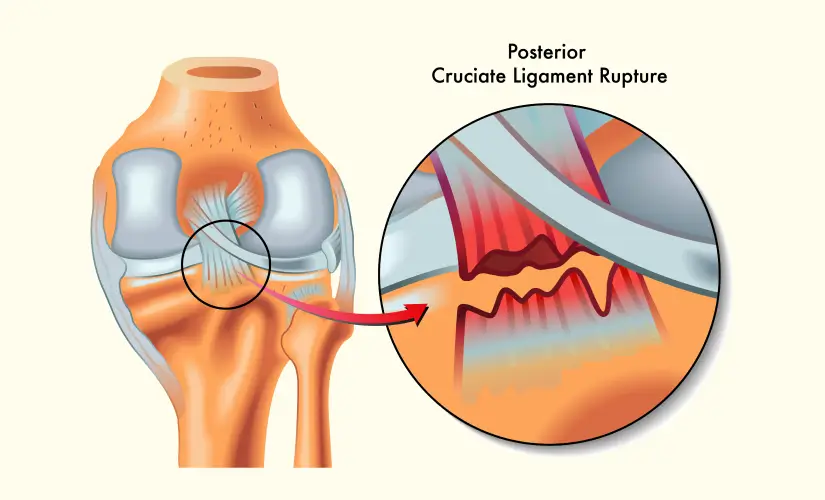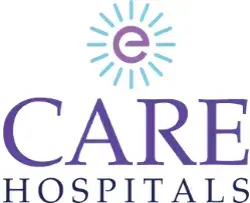-
Doctors
-
Specialities & Treatments
Centre of Excellence
Specialties
Treatments and Procedures
Hospitals & Directions HyderabadCARE Hospitals, Banjara Hills CARE Outpatient Centre, Banjara Hills CARE Hospitals, HITEC City CARE Hospitals, Nampally Gurunanak CARE Hospitals, Musheerabad CARE Hospitals Outpatient Centre, HITEC City CARE Hospitals, Malakpet
HyderabadCARE Hospitals, Banjara Hills CARE Outpatient Centre, Banjara Hills CARE Hospitals, HITEC City CARE Hospitals, Nampally Gurunanak CARE Hospitals, Musheerabad CARE Hospitals Outpatient Centre, HITEC City CARE Hospitals, Malakpet Raipur
Raipur
 Bhubaneswar
Bhubaneswar Visakhapatnam
Visakhapatnam
 Nagpur
Nagpur
 Indore
Indore
 Chh. Sambhajinagar
Chh. SambhajinagarClinics & Medical Centers
Book an AppointmentContact Us
Online Lab Reports
Book an Appointment
Consult Super-Specialist Doctors at CARE Hospitals

Knee Ligament Injury
Symptom, Causes, Diagnosis and Treatment
Knee Ligament Injury
People, especially athletes who make sudden twisting movements, often experience knee ligament injuries. The anterior cruciate ligament (ACL) suffers damage most frequently. Most people hear a distinctive pop when the injury occurs, followed by knee swelling and instability.
The risk of a ligament injury in the knee increases, especially when you have high-impact activities like football, basketball, and skiing. Car accidents and other traumatic events can also damage these ligaments.
This article covers everything you need to know about knee ligament injuries. Readers will also discover how to test for knee ligament injury, explore treatment options, understand risk factors, learn prevention strategies, and recognise when medical help becomes necessary for these potentially serious injuries.

What is Knee Ligament Injury?
The knee has four main ligaments - tough bands of tissue that connect bones and keep the joint stable. A knee ligament injury happens when these tissues get overstretched or tear. The four key ligaments are the anterior cruciate ligament (ACL), posterior cruciate ligament (PCL), medial collateral ligament (MCL), and lateral collateral ligament (LCL). These work together to keep your knee strong and prevent movements that could harm the joint.
Types of Knee Ligament Injury
Knee ligament damage ranges from mild stretches to complete tears. Doctors classify these injuries into three grades:
- Grade 1 (Mild): The ligament stretches but stays intact
- Grade 2 (Moderate): The ligament tears partially and becomes somewhat loose
- Grade 3 (Severe): The ligament tears completely, making the knee unstable
ACL injuries happen most often. MCL injuries come second, while PCL and LCL injuries are less common.
Knee Ligament Injury Symptoms
Patients might notice:
- Sudden, intense pain
- Swelling that shows up within 24 hours
- A "pop" sound right when you get hurt
- Knee feels unstable
- Patients can't put weight on that leg
- The knee won't move like it should
Causes of Knee Ligament Injury
Knee ligaments usually get hurt from sudden trauma. This can happen when a person:
- Twist your knee while your foot stays planted
- Stop or change direction quickly while running
- Land wrong after jumping
- Take a direct hit to your knee
- Get in a car accident or fall
Risks of Knee Ligament Injury
Some people face higher risks of hurting their knee ligaments. These include:
- Women tear their ACLs three times more often than men.
- History of ACL surgery
- Playing basketball, football, or skiing increases the risk
- Poor landing technique and playing on artificial turf can also lead to injuries.
Complications of Knee Ligament Injury
Leaving knee ligament injuries untreated can create serious problems down the road. About half the people with acute ACL tears end up with meniscal tears, too. Even worse, 95% of untreated ACL injuries lead to meniscus and cartilage damage within 20 years. This means you are more likely to develop osteoarthritis and might need a total knee replacement later.
Diagnosis
Physical examination: A doctor will check swelling and tenderness while comparing your injured knee with a healthy one. Your knee's range of motion and joint function are tested through various positions. Doctors can often diagnose the issue based on physical examination findings alone.
Several tests help confirm the diagnosis and show how severe the injury is:
- X-rays: Help rule out bone fractures but cannot show soft tissues like ligaments and tendons
- Magnetic Resonance Imaging (MRI): Creates detailed images of both hard and soft tissues that show ligament damage extent and signs of cartilage problems
- Ultrasound: Creates images using sound waves to check ligaments, tendons, and muscles
- Stress Tests: These include the Lachman test for ACL, drawer test for PCL, and valgus/varus stress tests for MCL and LCL
Knee Ligament Injury Treatments
The original treatment follows the R.I.C.E. protocol to manage pain and swelling:
- Rest: Keep weight off your knee
- Ice: Use ice packs for 20 minutes every two hours while awake
- Compression: Wrap an elastic bandage around your knee
- Elevation: Your knee should stay propped up on pillows
Treatment choices depend on how severe the injury is:
- Non-surgical treatment: Physical therapy, bracing, and exercises that strengthen muscles
- Surgical treatment: Multiple ligament injuries or knees that buckle during daily activities need this option
ACL reconstruction surgery uses a tendon graft to replace damaged ligament. The recovery process takes at least a year before you can safely return to sports.
When to See a Doctor
Medical attention becomes urgent if:
- Your knee joint looks bent or deformed
- You hear a popping sound during injury
- Weight-bearing becomes impossible
- You notice severe pain or sudden swelling
Schedule an appointment if your knee becomes badly swollen, red, warm, tender, or painful. A doctor's visit becomes necessary if knee pain affects your sleep or daily activities.
Prevention
You can prevent many knee ligament injuries through proper training and conditioning.
- Learning proper landing techniques after jumps
- Building stronger hamstring and quadriceps muscles
- Better core strength and stability
- Balance and proprioceptive exercise routines
Prevention programmes should mix different types of training. This includes strength work, plyometric exercises, and core conditioning. These exercises need to be practised for at least 20 minutes several times each week.
Conclusion
Knee ligament injuries pose major challenges to everyone, not just athletes. These injuries commonly occur during sports, but anyone can suffer from them through falls, twists, or direct hits. Knowing about the four main ligaments—ACL, PCL, MCL, and LCL—helps people spot potential injuries quickly.
Getting the right diagnosis is the cornerstone of successful treatment. Doctors use physical assessments and imaging tests to assess damage levels. Depending on the severity of the knee injury, treatment choices range from basic approaches like the R.I.C.E. protocol to surgery. Recovery takes time, especially after surgery. Medical help at the earliest stage is vital to avoid lasting complications.
Dealing with a knee ligament injury brings its challenges. Most patients return to their favourite activities with proper medical care, rehab, and patience. Understanding these injuries helps people make smart choices about their knee health, leading to better results and fewer chances of getting hurt again.
FAQs
1. What foods are good for knee ligament injury?
Good nutrition helps ligaments heal after an injury. Your body needs protein-rich foods to rebuild torn ligaments and support tissue repair. Lean meats, eggs, and plant proteins like lentils give you these building blocks.
- Vitamin C-rich foods (oranges, strawberries, bell peppers) improve collagen formation for ligament strength.
- Fatty fish with Omega-3 fatty acids reduce inflammation around the injured knee.
- Antioxidant-rich berries help curb oxidative stress that can slow healing
- Calcium and vitamin D from dairy or leafy greens support bone and muscle function
- Zinc from pumpkin seeds, whole grains, and beans speeds up cellular repair
- Your joints need proper hydration for lubrication and to transport nutrients to the injury site.
2. Is walking good for torn ligaments?
Doctors want you to use your knee normally with ligament sprains or ruptures. Walking won't cause more damage to the injured ligament. The right walking technique matters, though—your heel should touch the ground first with each step.
Start with short walks & slowly increase your activity time instead of staying inactive. Don't rush back to sports or hard activities until your doctor gives you the all-clear.
3. Can you walk with a knee ligament injury?
You can walk with a torn ACL once the original pain and swelling go down. ACL tears let you walk straight ahead but make turning or pivoting difficult. MCL injuries are similar—partial tears allow painful walking, while complete tears might need surgery first.
Both ACL and MCL injuries limit how far you can walk before surgery or physical therapy. A knee brace keeps your knee from moving inward while giving you some movement.
4. How do you heal a knee injury faster?
These steps can speed up ligament healing:
- Start first aid right away to reduce swelling
- Do your physical therapy exercises every day to build strength
- Eat foods that boost collagen production
- Drink plenty of water throughout recovery
- Limit anti-inflammatory medications as they might slow ligament healing
- Move gently instead of resting too long since movement helps repair
- Minor sprains heal in 4-6 weeks, while moderate tears need 6-10 weeks with proper care.
5. How do you test for knee ligament injury at home?
An expert diagnosis is vital, but you can look for common signs like sudden pain, bad swelling, joint looseness, and trouble putting weight on your leg. A popping sound during the injury often points to ligament damage.
6. How should I sleep with a torn knee ligament?
Sleeping on your back works best because you can elevate your injured leg properly. To arrange everything correctly, put a pillow under your calf, not directly under the knee. Side sleepers should place a pillow between the knees to keep their hips straight and reduce pressure on the hurt knee. A knee brace during sleep keeps your joint stable and stops unwanted movement that could cause pain or more damage. Position your leg comfortably without stretching the injured area too much.
7. How much time does a knee ligament injury take to heal?
The knee ligament injury recovery period depends on the severity of the injury. Grade 1 (mild) sprains need 4-6 weeks with basic treatment. Grade 2 (moderate) tears take 6-10 weeks to heal properly. Grade 3 (complete ruptures) usually require surgery and at least 9 months of recovery before you can safely play sports again. Full healing and return to your original activity level might take a year, especially for athletes who need complete knee stability.
Still Have a Question?


